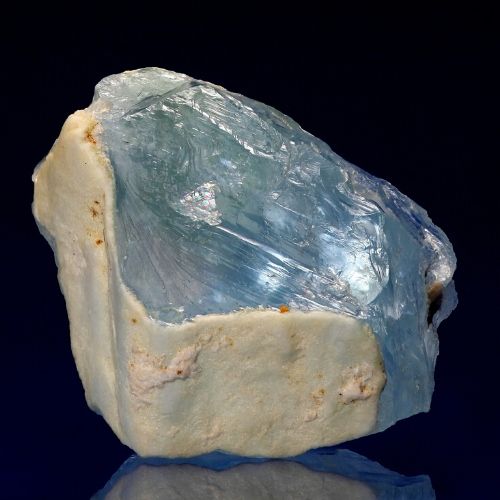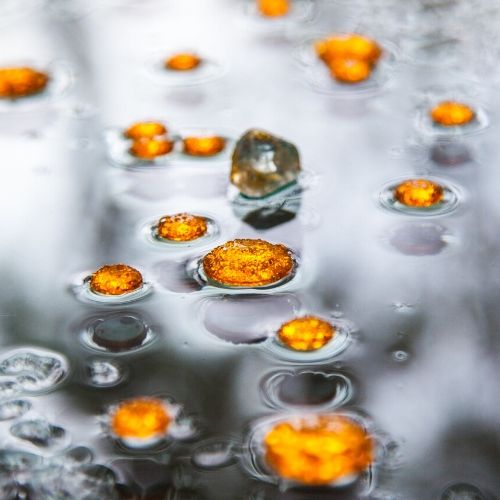November birthstone topaz is beloved for a stunning and wide color range that includes various tones and saturations of blue, green, yellow, orange, red, pink, and purple. The history of topaz suggests two possible origins for the word -- According to the Latin writer of the early Roman Empire known as Pliny the Elder, topaz derives its name from the ancient Egyptian Island of Topazos in the Red Sea where gemstones were discovered and mined by the Romans. The island never produced topaz, but was a source of peridot, which was confused with topaz before the development of modern mineralogy. Alternately, some scholars suggest the name “topaz” comes from the Sanskrit word tapaz , meaning "to burn with passion" and is associated with a special form of yoga that requires rigorous self-discipline to achieve spiritual purity and power -- making it the perfect birthstone for both November Scorpios and Sagittarians!
Ancient Egyptians believed topaz’s golden color was created by the glow of the Sun God Ra; making it a powerful amulet possessing multiple healing properties that would protect the stone’s owner from harm. The Romans associated Topaz with Jupiter, also God of the Sky, and King of the Roman pantheon, and believed that if topaz was near poisoned food or drink it would change color and thus alert the stone’s wearer to the danger. The ancient Greeks said that it had the power to increase strength and make its wearer invisible in times of emergency. For centuries, many people in India have believed that topaz worn above the heart assures long life, beauty, and intelligence.
Although topaz can be found in a full spectrum of colors, many people still associate these gems with the classic golden yellow. Pure topaz is colorless, yet due to naturally occurring imperfections and impurities in its crystal structure, yellow, brown, orange, beige, red and light green is also found. Some very rare and exceptional topaz is found in pink, orange, sherry red, purple and blue.
Red and pink topaz gems were used in the jewelry of the 18th and 19th Century Russian Czarinas and therefore topaz is sometimes called "Imperial Topaz". At the time, the Ural Mountains were topaz’s leading source and the gemstone mined there was named to honor the Russian czar. Ownership of the gem was restricted to the royal family.
The most common places where topaz is mined are Afghanistan, Australia, Brazil, The Czech Republic, Germany, Italy, Japan, Mexico, Norway, Pakistan, Russia, Sweden, and Texas and Utah in the United States.
Blue Topaz was designated the Texas state gem in 1969 and is found in the Mason County area in Central Texas, where North America's largest known gem-quality Topaz was discovered in 1904. This 1,296-gram, 6480 carat, pale-blue crystal now resides in the Smithsonian Institution in Washington DC.
The most common natural topaz colors are clear, pale yellow, and brown but they can be treated with heat, radiation, or metallic coatings to produce colors that are more vibrant and desirable. Although reputable gem sellers will always declare any irradiation, surface treatments or coatings, the following information may be helpful if you are considering purchasing something lovely and topaz for that special someone with a birthday in November:
- Many of the available contemporary pink stones are heat-treated rather than naturally occurring. Natural brownish-yellow topaz turns pink with applications of heat.
- Natural blue topaz is not mined in abundant enough quantities to meet consumer demand for inexpensive transparent blue gems, so most blue topaz in the market today is produced by irradiating clear or light blue topaz and applying heat so that it resembles a brilliant aquamarine stone. These stones are stable in natural light but under the jeweler’s torch the color reverses to white.
- Topaz is sometimes coated to produce iridescent "mystic topaz" and more vivid pinks. Titanium dioxide vapor can be applied as a thin coating that achieves the desired effect; however, these coatings are not permanent and can gradually fade over time. Additionally, stones that have been treated in this way should not be re-cut, as the undesirable stone color beneath the coating will be revealed with the cut.
- “Green topaz” can be produced by exposing white topaz to chemicals and heat, but once again, the treatment only changes the surface color and re-cutting will reveal the original color.
Diane Morgan claims topaz as an all-purpose magic stone. “It is said to stimulate the intellect, increase courage, and protect warriors. It has been used to divine for water and treasure; it also brings fame and fortune.” Judy Hall maintains that topaz is a “mellow empathetic stone that directs energy to where it is needed most.” She also says that it “brings about a trust in the universe that enables you to ‘be’ rather than to ‘do’.According to Melody topaz is known as a stone of true love and success in all endeavors, it can promote individuality and creativity while providing confidence, and that the energy of topaz acts through the laws of attraction and manifestation.
This beautiful and sturdy stone has deep roots in antiquity, and remains a favorite today, proving its timelessness and enduring appeal. Topaz can bring luck and success to the wearer, increasing one’s skills and knowledge, and revealing their “True Path” to them. Regardless of one’s belief in the stone’s powers, it is still quite lucky to have one of these precious gemstones!





